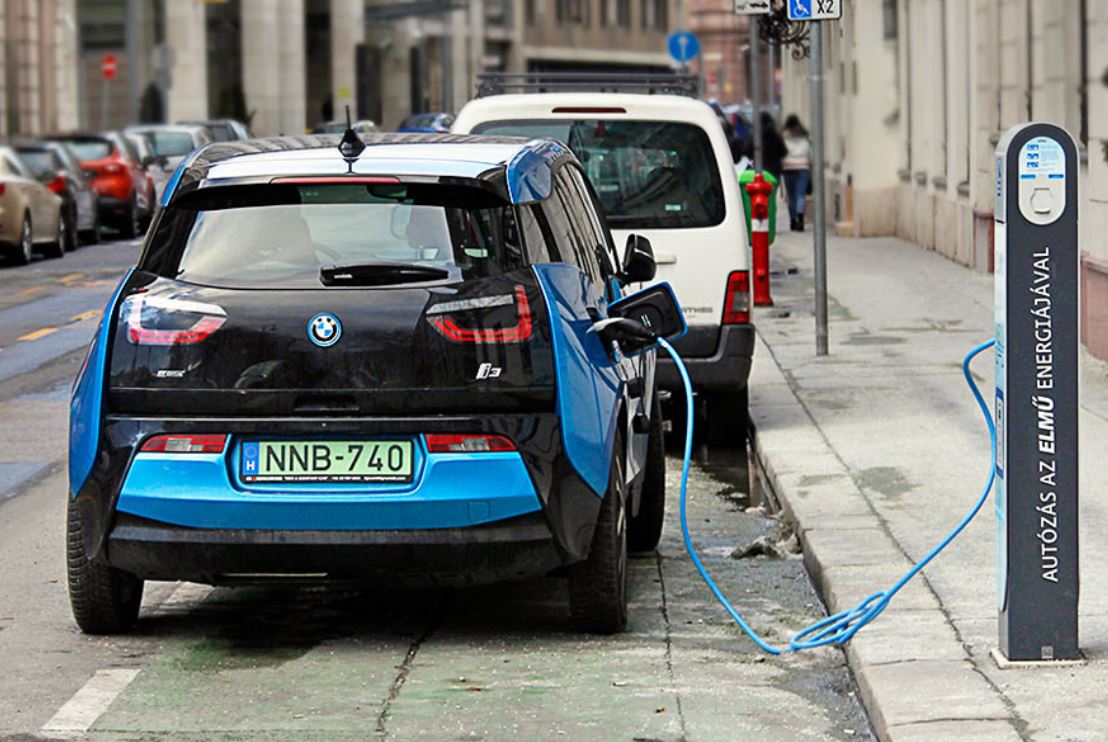 According to new research, an aggressive adoption of electric vehicles (EVs) would reduce net carbon emissions and improve overall air quality.
According to new research, an aggressive adoption of electric vehicles (EVs) would reduce net carbon emissions and improve overall air quality.
A study conducted by researchers from Northwestern University quantified the differences in air pollution generated from battery-powered EVs versus internal combustion engines.
The research was published in the journal Atmospheric Environment (citation below).
Switching from conventional gas vehicles to battery-powered EVs is a key part of global strategies to achieve greenhouse gas mitigation targets. However, because of complex emission sources and nonlinear chemistry, how such a shift might impact air quality is unclear.
“In contrast to many of the scary climate change impact stories we read in the news, this work is about solutions,” said Northwestern’s Daniel Horton, senior author of the study.
“We know that climate change is happening, so what can we do about it? One technologically available solution is to electrify our transportation system. We find that EV adoptions reduces net carbon emissions and has the added benefit of reducing air pollutants, thereby improving public health.”
The team used an emissions remapping algorithm and air quality model simulations to determine the differences between EVs and conventional vehicles, focusing on ozone and particulate matter – two pollutants related to automobile and power emissions.
Using a prototype version of the new generation NOAA GFDL global Atmospheric Model, researchers estimated the impact that aggressive conversion of internal combustion vehicles to battery-powered EVs would have on air quality in the US.
A number of variables were taken into consideration, such as seasons and times of day, geographical locations, potential EV adoption rates, and the generation of EV power supply – this includes our current combustion-dominant mix, combustion-only sources and enhanced emission-free renewables,
In simulations of warmer weather, particulate matter decreased across the board. However, in winter months ozone levels increase slightly but much lower compared to summer because of a chemical reaction that occurs differently during times of lesser winter sunlight.
“Across scenarios, we found the more cars that transitioned to electric power, the better for summertime ozone levels,” said Jordan Schnell, the paper’s first author. “No matter how the power is generated, the more combustion cars you take off the road, the better the ozone quality.”
Schnell added:
“We found that in the Midwest, the increased power demands of EV charging in our current energy mix could cause slight increases in summer particulate matter due to the reliance on coal-fired power generation.
“However, if we transition more of the Midwest’s power generation to renewables, particulate matter pollution is substantially reduced. In the Pacific Northwester or Northeast, where there is already more clean power available, EV adoption — even with the current energy mix — will decrease particulate matter pollution.”
Citation
Jordan L. Schnell, Vaishali Naik, Larry W. Horowitz, Fabien Paulot, Paul Ginoux, Ming Zhao, Daniel E. Horton, “Air quality impacts from the electrification of light-duty passenger vehicles in the United States”, Atmospheric Environment, Volume 208, 2019, Pages 95-102, ISSN 1352-2310, https://doi.org/10.1016/j.atmosenv.2019.04.003.
